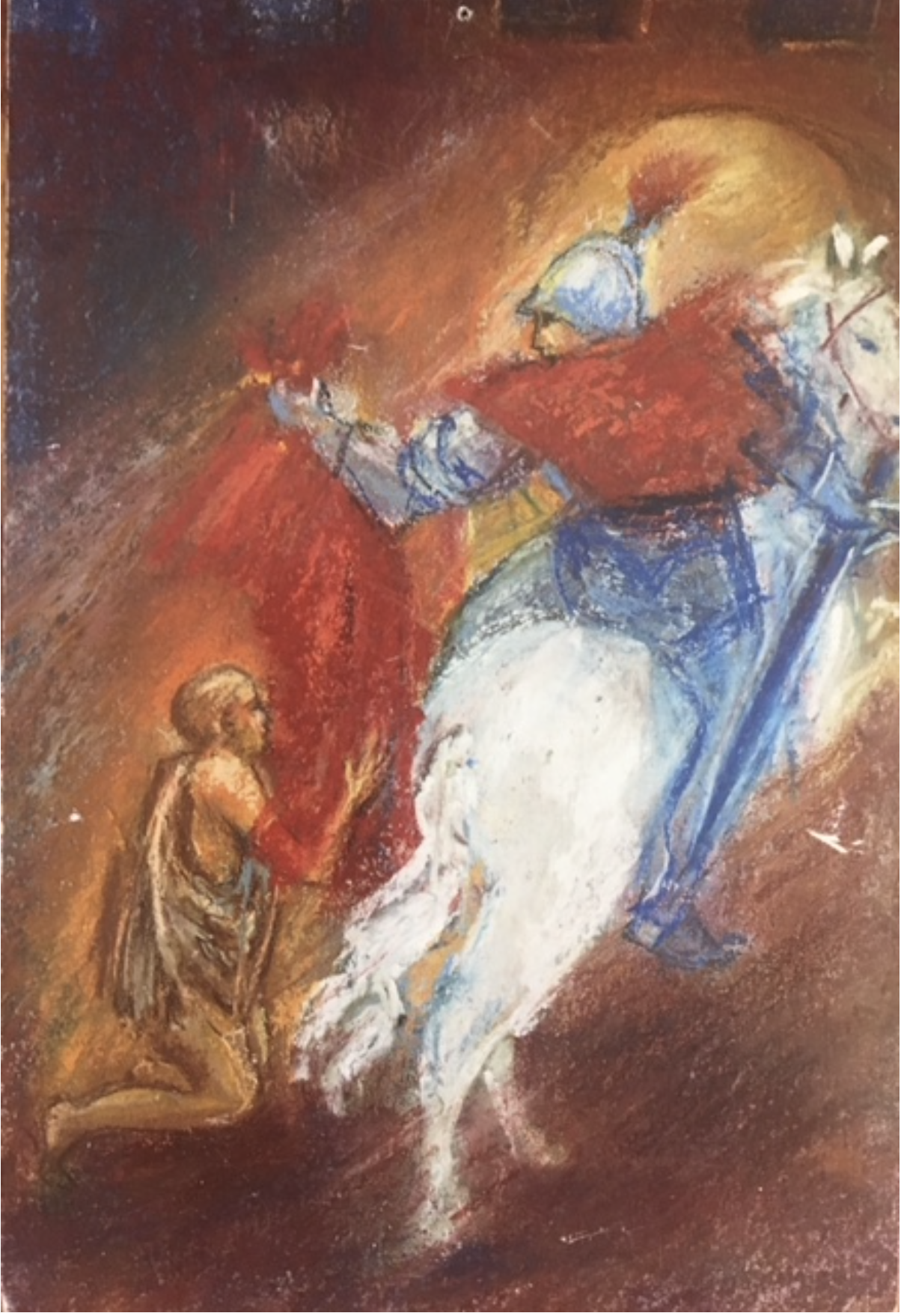St. Martin’s Cloak
Artwork above is by: Marjan Van Zehl
The individual cannot be fully healthy when his/her community is unhealthy. Our own health is intimately tied to that of our neighbors. St. Martin’s Cloak is a fund which is reserved for the purpose of grants to those individuals who may not be able to afford the monthly fee, therapies, and/or supplements and anthroposophical remedies. Recipients of grant money will be chosen at our discretion, and will always be asked for a co-pay contribution of some kind, however small it may be. There will be a waiting list and recipients will be notified as money becomes available in the fund.
The story of St. Martin is as follows:
St. Martin of Tours, (born 316, Sabaria, Pannonia [now Szombathely, Hungary]—died November 8, 397, Candes, Gaul [France]) Of pagan parentage, Martin chose Christianity at age 10. As a youth, he was forced into the Roman army, but later—according to his disciple and biographer Sulpicius Severus—he petitioned the Roman emperor Julian the Apostate to be released from the army because “I am Christ’s soldier: I am not allowed to fight.” When charged with cowardice, he is said to have offered to stand in front of the battle line armed only with the sign of the cross. He was imprisoned but was soon discharged.
Legend holds that while he was still in the military and a catechumen of the faith, Martin cut his cloak in half to share it with a beggar.
St. Martin also opposed the executions of some people whom he considered heretics, even though he disagreed with them, and because of this he fell into disfavor with parts of the religious establishment. During his lifetime, Martin acquired a reputation as a miracle worker, and he was one of the first non-martyrs to be publicly venerated as a saint.
A question to contemplate: Why did St. Martin only share half of his cloak?

